
The Top 15 Best Fighting Game Storylines: Part 3 (5-1)
March 21st, 2012 by Gavok | Tags: fighting games, mortal kombat, street fighter, tekken, Video GamesBefore I finish off the list, I want to point out an honorary mention of sorts. When they came out with Ultimate Marvel vs. Capcom 3, they changed a lot of the endings. For some, the art was altered to feature different characters. For many, the dialogue was changed and made half as long as in the previous game. Still don’t understand that one. A couple guys from the first game got new endings because the previous ones were pointless. For instance, Ryu’s ending in Marvel vs. Capcom 3 features him facing off against Iron Fist in a Madripoor fighting tournament. Considering Iron Fist is in the upgraded game, there’s nothing special about his surprise reveal. So instead, Ryu’s ending has him discover a new role in the world.

Huge smile on my face when I saw that. Coincidentally, Iron Fist’s ending involves him starting up a new Heroes for Hire with Luke Cage, Misty Knight, Colleen Wing, Ryu, Chun-Li and Rival Schools’ Batsu. I’d easily pay the $3.99 every month for that comic.
5) Jinpache’s Emotional Deaths
Tekken
Jinpachi Mishima was a good man who opposed his evil son Heihachi, but due to some convoluted storytelling, he became imprisoned underground for decades, infected by a gene that’s driving him to destroy everything. He becomes released during the conclusion of Tekken 4 and sets up the tournament for Tekken 5. Part of Jinpachi wants to get all the great fighters out of the way so he can lay waste to the planet. Part of him wants someone to stop him before he goes too far.
The elderly Wang Jinrei has been in the Tekken cast since the beginning, but he’s also been boring as hell while adding nothing of interest. One thing established is that he and Jinpachi were good friends back in the day and that’s one of the reasons Wang is out to stop Heihachi. Throughout the fifth tournament, he gets this strong feeling that something unbearably terrible will happen at the end. When he faces Jinpachi, seeing him in his demonic form, he outright refuses to fight his best friend. Jinpachi begs him, saying that his human consciousness is weakening by the moment and he needs to die soon or else. Wishing there was another way, Wang reluctantly goes to town.

What follows is one of the saddest video game moments, thanks to some fine voice acting (even though one guy is speaking Chinese and the other Japanese) and captivatingly realistic CGI work. Jinpachi lay on the ground, back in his human form. Wang tries to comfort him, saying he shouldn’t have to apologize for what he’s done. Weakly, Jinpachi wishes that they could have one last drink, but then he dies and instantly melts into sand.
Wang reacts in heartbreaking fashion, pawing through the sand while desperately shouting his friend’s name before breaking down and crying. He stands up and looks into the night sky, musing that his time hasn’t come. In the following game, Wang finally succumbs to old age and dies, but it isn’t a total loss. His final musings are about how he’ll finally get to see his best friend again.

A great companion to the Wang ending is Kazuya’s. In the same fashion, he races over to Jinpachi’s body and tries to wake him. Kazuya appears to hold some genuine sentiment over his grandfather, remembering how he’s the one person to give a damn about him as a child, back before he went off into this bent path.

Jinpachi weakly looks up at him, just before Kazuya’s face suddenly turns to his trademark twisted smile and Jinpachi gasps. Kazuya delivers a killing blow, renders the body to sand and then laughs while turning towards the camera.
Haha, what a dick.
4) Noob Saibot: Shadow of His Former Self
Mortal Kombat
Heh. Like I’d go the whole list without representing Mortal Kombat. This one I have to include because, long story short, I kind of have something to do with it.
The first Mortal Kombat plays up the feud between rival ninjas Sub-Zero and Scorpion. Scorpion has returned from the dead to exact revenge on the man who killed him. The storyline in Mortal Kombat 2 explains that Scorpion got his vengeance, but now there’s a new Sub-Zero. This turns out to be the original’s brother, who ends up being a pretty swell guy. This game also introduces hidden character Noob Saibot, a ninja encased in shadow. They never give him any background whatsoever until three games later when they release Mortal Kombat Trilogy. Through his ending, it’s explained that Noob Saibot is the herald of Shinnok, the evil elder god. It does a pretty great job of making this new villain sound menacing as hell. Too bad we get this instead.

Shinnok. What a letdown of a main villain.
Noob remains in the sidelines for the next few games, but around the release of Mortal Kombat 4, Midway releases a sidescrolling adventure game called Mortal Kombat Mythologies: Sub-Zero. The game is barely playable, but the overall storyline is pretty cool. It’s a prequel, showing how Sub-Zero killed Scorpion. Soon after, he unwittingly helps Shinnok and Quan Chi in their plot to take over Earthrealm. Raiden, God of Thunder and protector of the realm, gets understandably pissed at the ninja for selling out his entire planet. Sub-Zero enters Hell, evades Scorpion, beats up Quan Chi, puts an end to Shinnok’s plan and escapes back to the world of the living. By all means, this should be a happy ending.
Sub-Zero is bothered, though. Quan Chi told him that the only reason he was able to enter Hell is because he’s tainted with evil and will end up there when he dies. Raiden says it isn’t too late. Sub-Zero can repent, leave his ninja clan and earn his way into Heaven. He has that potential.
The next scene shows Sub-Zero instead bowing down to the grandmaster of his clan, swearing complete allegiance to the Lin Kuei. He’s rewarded for his loyalty by being given an assignment to enter the upcoming Mortal Kombat tournament. He’s sealed his own fate, not unlike Vincent Vega in Pulp Fiction.
The weird thing is, if Noob Saibot is Shinnok’s henchman, how come he’s nowhere to be seen during the entirety of Mythologies? And why is he dressed as a ninja, anyway? Well, outside of programmer laziness, I mean.

During his ending in Mortal Kombat: Deception, Noob’s past is finally explained. He is Sub-Zero. Being killed by Scorpion, Sub-Zero went to Hell, where he was reborn as a wraith, no longer feeling any human emotions. After all this time, everything finally ties together in a neat bow.
3) King and Marduk: Foes Before Bros
Tekken
There are four guys in Tekken named King, all Mexican wrestlers wearing realistic jaguar masks and speaking only in growls that everyone somehow understands. The first two come from the initial two games. Regular King runs an orphanage and has a really bad alcoholism problem. His rival/friend/whatever Armor King appears to him and gets him back on track. King gets his self-respect back and finds that even if he doesn’t feel himself worthy, his children love him anyway.
Sometime in-between Tekken 2 and 3, King is killed by Ogre. One of the orphans decides to take up the mantle, becoming the new King. He competes in the tournament, Armor King ends up training him and the legacy is in full swing.

Enter Craig Marduk. Marduk is a pastiche cocktail of Bill Goldberg, Bob Sapp and Nathan Jones. He’s a Vale Tudo fighter who went undefeated for years, but was banned from the sport after being linked to a scandal. He became an enraged shell of himself, living a self-destructive lifestyle. This comes to a head when he gets in a bar fight in Arizona and kills his opponent. His victim? Armor King.
King is rightfully enraged by this. He pools a lot of money together, buys off the right people and gets Marduk released from prison. Marduk knows nothing about why he’s a free man other than a plane ticket and a newspaper article on the next King of Iron Fist tournament. The two clash at the tournament and King not only wins, but he beats Marduk within an inch of his life. Later, he goes to the hospital to finish him off and fulfill his revenge fantasy. He finds Marduk unconscious and hooked up to life support. As he pulls his fist back and prepares to take him out, he notices a nearby recent photo of Marduk with his parents. Realizing that even someone like Marduk has loved ones, King can’t bring himself to murder him and instead storms out of there.
Incensed by his loss to King, Marduk trains harder. He enters a Vale Tudo tournament while wearing Armor King’s mask and annihilates the competition. Upon winning, he takes the mask off and publicly challenges King to a rematch. If Marduk is to win, he reinforces his asshole ways and continues to be a reckless bully to the point where he interrupts a boxing match, beats up both competitors and starts up a rivalry with Steve Fox. That isn’t what happens, though. What happens is that King beats Marduk again, getting him to admit that he’s lost. King reaches out to his enemy and offers to help him up with a handshake. Taken down a couple notches by some much-needed humility, Marduk takes him up on the offer.

As King’s ending reveals, the two have decided to let the past be the past and now work together as the world’s most dominant tag team. Around this time, a new Armor King appears. He roughs up Marduk and when King questions who he is, he gives King the same thrashing. King and Marduk are both confused and driven to find out what this is all about. King figures that this new guy is insulting his mentor while Marduk wonders if he’s being haunted.
In Tekken 6, the three characters all have short endings, but watching all three unlocks an epilogue that ties it all together. King looks at a framed photo of Armor King and accidentally drops it. He finds a hidden photo in the frame of two Armor Kings shaking hands. We see the current Armor King elsewhere, staring at the same photo. He gets up and angrily walks off. Then Marduk goes and digs up the grave of the first Armor King to make sure it isn’t him. When he sees the corpse still there, he turns around and finds the new Armor King waiting for him. King appears at Marduk’s side and demands to know who Armor King really is. According to the mystery man, there have always been two Armor Kings and the one Marduk killed was his brother. He’ll never forgive Marduk for this and he isn’t so keen on King’s strength to forgive.
I’m not completely sure on what this truly means about Armor King’s history. Is this a separate guy doing other stuff as Armor King or did the two brothers have some kind of Prestige situation where they were both training King and King didn’t even realize it? Either way, the Armor King subplot is used as fuel for the King/Marduk team’s story in Street Fighter x Tekken, where they hear that Armor King has been sighted in Antarctica, the same place where all the other fighters are drawn to. Their dialogue between rounds is great stuff, mainly due to how chill they’ve become as a unit, calling each other “bro” and the like.
2) The Mortal Kombat Reboot
Mortal Kombat
Overall, I’d say that the best overall story in any fighting game goes to both Street Fighter and Mortal Kombat. Street Fighter’s focuses more on the characters and their relationships while Mortal Kombat has its own realized mythology. Even though it’s been home to some bad TV, movies, comics and a novel, there’s still the potential for some good writers to mine the whole concept and tell some good stories out of its universe.
One thing agreed on by just about everyone is that the atmosphere of the first three games is when it peaked. The games from Mortal Kombat 4 onward were filled with some bad character designs, questionable resurrections and the worst bait-and-switch during Mortal Kombat: Deception. “Hey, so we’ve decided that since Scorpion is the most popular character by far and he got a shit ending in the last game, we’re going to make him the marquee character! Yeah, forget Liu Kang and Kung Lao and all that. It’s Scorpion’s show now! Haha, just kidding. We’re giving that role to a gullible old man suffering from mental retardation. Enjoy your fetch quests, suckers!”

The two best things about the later games are how they change up the stagnant characterizations of Liu Kang and Raiden. Liu Kang is killed off (along with Goro and Shao Kahn in one fell swoop, which was a ballsy move) and later comes back as a mindless zombie. Meanwhile, Raiden becomes increasingly frustrated with his position of protector of Earthrealm and it leads to him becoming a darker, more vengeful god.
By the seventh game, they decide to gimmick it by making the game about how you can play as just about every Mortal Kombat character ever. This means bringing everyone back with no explanation, but at least there’s a story in there: everyone’s playing king of the mountain by fighting their way up a pyramid to defeat a giant fire monster and collect unlimited power. The recent release of Mortal Kombat 9 (people count Mortal Kombat vs. DC Universe as #8), otherwise known as just Mortal Kombat, picks up right from there… with everybody dead. The entire cast has slain each other, leaving only an all-powerful Shao Kahn and a dying Raiden at the top. Knowing that all of existence is screwed, Raiden uses his shattered amulet to send a message back to his younger self from the first game: “He must win!”

What we get is easily the coolest story mode of any fighting game. A backstory only expressed in blocks of text is now expanded upon and altered through this reboot. We go through the first three games with Raiden making the effort to change as much as possible. The first game is mostly unchanged, since Raiden figures “he” means Liu Kang. The second game features a couple notable changes in that Sub-Zero gets captured and turned into a cyber ninja by his clan instead of Smoke. Then since he starts to second guess Liu Kang due to his own prophecy, he sends Kung Lao into the end of the tournament, which leads to Lao’s death at Shao Kahn’s hand.

By the third game, all hell breaks loose. Although he saves Johnny Cage’s life while killing Motaro, Raiden proceeds to shit the bed to a hilarious extent. Soon he’s second guessing everything he’s done, Liu Kang grows to really despise him and nearly EVERYONE gets killed off. Seriously, by the time Raiden saves the day, the only two other heroes left alive are Johnny Cage and Sonya Blade. Even Liu Kang bites the dust, with his last words being a bitter, “You’ve killed us all.”
And it’s still not over! Sure, Shao Kahn is destroyed for good, but there are more bad guys alive than good guys and the final scene shows Quan Chi and Shinnok, the villains of Mortal Kombat 4, plotting their eventual invasion. An invasion that was originally stopped by, you guessed it, Liu Kang.

I’m excited to see what’s next. Sure, Mortal Kombat 4 had some lousy stuff going on, but the new Mortal Kombat did wonders for even the worst parts of the first three games. For instance, Stryker was the joke of those games, yet the reboot freshened him up to the point that he’s a likeable hardboiled action cop. Others like Nightwolf, Sektor and Sindel are reintroduced and given new leases on life… until they all die. Surely they can work the same magic and make Kai – and guy whose only characterization is “Liu Kang’s friend” – and make him an interesting protagonist.
Also great with the new Mortal Kombat is that despite the linear story mode, you can still see “what if” by playing through arcade mode and getting the various endings. Almost all of these are fantastic and are filled with callbacks, cool reveals and moments of pure badassery. Look no further than Sub-Zero’s ending, where he and Scorpion finally put their differences aside.
You know what? While I’m at it, check out Stryker’s ending too for a laugh.
1) It’s the Eye of the Tiger, it’s the Thrill of the Fight
Street Fighter
Personally, I’d say that no fighting game character has a better story arc than Sagat. Originally, his story wasn’t the most complimentary. He fights Ryu in the first game, loses and now acts as an enforcer at M. Bison’s side, defined by how bitter he is over his loss. In other words, he’s nothing but a gigantic, whiny loser.

The Alpha games go back and fix him up a bit. Prior to the games, Sagat is a dominant Muay Thai fighter who challenged world champion Go Hibiki. Go took out Sagat’s eye and in return, Sagat violently beat him to death with Go’s own son Dan in the crowd. Dan would grow up bitter, training to one day avenge his father. He tries to train under Gouken, but he only learns the basics before Gouken realizes that Dan’s out for revenge and kicks him out. Dan uses what he’s learned and fashions his own weak fighting style called Saikyo.
Sagat gains a great pupil in Adon, who is jealous of his master, yet still respects him. The retcon of Street Fighter 1 doesn’t make his loss so cut-and-dry. Sagat actually beats down Ryu pretty badly and, in an act of vanity, offers his hand to help him up. Ryu is very briefly taken over by the Dark Hadou and unleashes a seriously power Shoryuken that tears open Sagat’s chest and takes him down. Ryu returns to normal, the winner, yet only cheaply and at a tremendous cost.
Sagat’s time with Shadaloo is fairly brief. His fighting style becomes more anger-based, much like what got him to the dance when he took out Go Hibiki. He becomes obsessed with finding Ryu and getting his rematch, but his rage clouds his mind. Even though Adon lost against Ryu too, he sees Sagat’s loss as a sign of weakness and makes his move. The two fight it out and Adon is able to oust his master, making him the world’s champion in Muay Thai. Having lost everything, Sagat becomes introspective and realizes that he’s moving closer towards self-destruction.

All this time, Dan Hibiki has been a punching bag for Sagat, always being knocked down, yet always coming back for more. Sagat understands Dan’s hate and chooses not to let it continue. Sometime after the Adon debacle, Sagat faces Dan and throws the fight, making it look like Dan won fair and square. Dan gets over his father and both he and Sagat are able to move on.
During the story of Street Fighter Alpha 3, Sagat discovers that M. Bison has kidnapped Ryu and brainwashed him into being a mindless slave. Sagat turns on his employer and fights Ryu himself. Sagat wins and helps snap Ryu back to normal. The two of them and Sakura then work together against Bison, destroying his current form. Sagat and Ryu each have one win, but neither truly counts. Sagat tells Ryu to go off and train so that they can fight again one day and then remarks to himself that for the first time in years, he’s genuinely excited about the future.
Backtracking a bit, there’s a side story in Ryu Final that takes place shortly after Street Fighter 1 when Sagat’s wound is still fresh. When training, he knocks down a tree and uncovers a little boy, horribly wounded from a tiger attack. A doctor informs him that there are poachers who use children as decoys. Sagat searches the jungle to find the responsible poacher, who is now using that boy’s little sister. He uses her as a hostage and tries to talk his way out of it until the boy shows up and shit gets real.
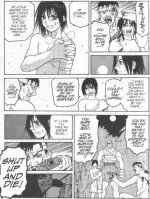
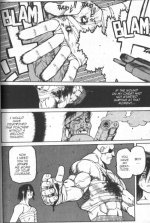
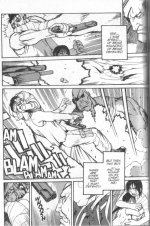
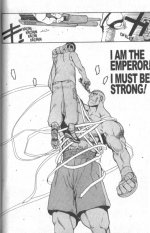
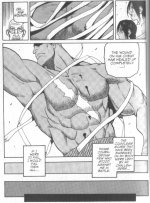
Sagat then practically adopts these two. This whole bit is so great that Capcom decided to make it canon, as the siblings appear in his Super Street Fighter 4 cutscenes and the girl is part of his plot in Street Fighter x Tekken.
By Street Fighter 4, Sagat is able to decisively defeat Adon, winning back the title of Emperor/King of Muay Thai. After the adventure, he returns home to his children and tells them about his journey. He mentions that he got to fight Ryu again and while he doesn’t explain the details, he does smile and say that he had fun.
Ryu Final acts as a perfect ending to his story. During the days of Street Fighter 3, Sagat sits in wait in Thailand until Ryu seeks him out, trying to prepare himself for his eventual fight with Akuma. The two fight and Sagat wins. Yet at the same time, the scar on his chest is torn open again. It’s a victory of sorts for Ryu, as he’s reached the point where his pure fighting style is at the very least on par to the corner-cutting dark style that cheaply broke Sagat’s skin years ago. Bandaged up, Sagat makes Ryu promise that he’ll return to fight him again if he survives against Akuma. As Ryu walks off, Sagat calls him back.
Grinning, he says that he’s tired of waiting to be challenged. This time he’ll be the one seeking out Ryu.
Over the course of all these games, Sagat goes from bored champion to desperate loser lowlife to a man who regains his purpose and dignity and comes out better than when he started. Like I said, Street Fighter has the best characters.

Hooray final part is up, been checking 4th letter far too much recently in anticipation.
Good call on Sagat as 1, it’s been awesome playing through the series and seeing his progression as a character.
Kind of wondering where Tekken is going with the 2nd Armor King thing, at first I wondered wether he’d be the original King brought back because no one cares about Ogre’s kill list anymore but I don’t think that’s where this is going…?
Sagat is my Street Fighter main, so I’m very happy to see he got the top spot.
Hm. Just from the best-selling series, then? I think I’d put 10 of The Last Blade (localized title) series’ characters stories above the bottom 10 here.
Yeah, but that’d just be an article about the Last Blade then, wouldn’t it?
Awesome stuff. Fighting games usually get the short end of the stick with the story modes but these articles shows how you can do it well with enough exposition (And without compromising the gameplay). Granted the list is missing some of my favorites (Project Justice’s interweaving arcs for each team. MK Vs DC’s goofy and hilarious story mode. BlazBlue’s Comedy Endings) but it’s a damn good list all the same.
Makes me wonder what the proposed story mode for Marvel Vs Capcom 3 that was cut would have been like though? That could have been all sorts of fun. Maybe Capcom will pick it up again with the inevitable MvC4 in a few years?
Sagat’s my favorite character in fighting games too and Capcom did a great job of gently massaging his story until he went from vengeful prick to sympathetic anti-hero.
@GhaleonQ: I don’t know if I’d call Mace: The Dark Age a best-seller. Nothing against Last Blade. I enjoyed playing the games and the animation is beautiful, but the story didn’t really grab me.
Dude, as always awesome articles. I’ve played fighters for years and SF was the first one me and my sister picked up from blockbuster on a summer day. It was a whole new world, and the colorful characters and their stories kept me interested in why a brush headed soldier wanted to murder a scarlet clad dictator.
Even though these stores have never been the deepest, there’s great character connections and moments if you look around. Japan would get the great stuff in these things I’ve heard called “gaming mooks” and expand greatly on details not even found in the game.
I’ve been wowed by MK’s change and it’s rather refreshing to see them set the new standard for Story modes and even fighting game extras. I’d love to see future fighters pick that up.
I love and miss Guilty Gear and found Faust to be really quirky bizarre and fun to play, but I ended up staying because of his story.
I agree with your choice of making Sagat #1. I think he’s had the most improvement and growth over the years. I love his ending quote in SFxT and his genuine love for the kids he adopted. That is something I never imagined being added, but man oh man does it make him a real person. I do hope that the following Street Fighters try a little bit of risk and develop some of the characters in a similar manner.
Sorry, rambling hah. Excellent analysis dude. I enjoyed this 3 parter quite a bit! 🙂